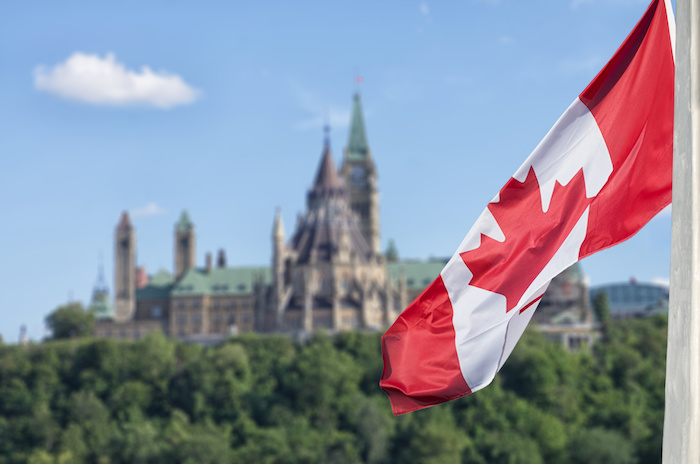Features
Election reflection: Cannabis is not even on the radar
Published on September 30, 2021 by David Wylie

Here’s my No. 1 learning from this past federal election: cannabis isn’t even on the radar.
That needs to change.
Now that this federal election is done, the government looks just about the same (new boss like old boss).
Here’s the seat count:
- Liberals 157
- Conservatives 121
- Bloc 32
- NDP 24
- Greens 3
That means a minority Liberal government, relatively unchanged from before the election—likely propped up by the NDP.
For cannabis, its means it will continue to be treated as a health, safety and social justice issue.
Though many would like it also to be treated as a consumer and economic issue.
Not my first rodeo
I’ve been watching this election closely. It’s not my first rodeo. I’ve been a journalist for more than 20 years, and have covered lots of elections in lots of different ways. I started as a cub reporter doing Q&As with candidates in backwater BC and worked my way up to covering politics from Ottawa as a national newswire editor.
I’ve even worked in the past running communications for election campaigns.
This federal election, as publisher of cannabis magazine, the oz., I focused on weed.
When it comes to politics, I’d say cannabis is either ignored or treated as a health risk—more like tobacco than alcohol.
For background, here’s Part 1 in a rundown on where each party stands on a handful of cannabis issues. It took some cajoling to reach them all, but I managed to speak to four candidates in different BC Interior ridings about their party’s views on a handful of issues around weed, including:
- How to help Canadian cannabis producers on the global stage (worldwide cannabis industry is projected to reach close to US$100 billion over the next five years)
- Encouraging a more sustainable industry overall (Many consumers have complained about packaging and organic producers have been handcuffed by red tape)
- Making banking easier for cannabis companies (Some companies still can’t open a bank account, never mind secure a business loan)
- Changing THC limits on edibles and beverages (Consumers and producers would benefit from higher limits)
- Easing marketing restrictions (There’s a of confusion out there about what can and can’t be done/regulations are much less restrictive in the US)
Won’t touch it with a 420-foot pole
Most candidates were on the uncomfortable side talking about the cannabis industry. However, the issue that they were generally most comfortable discussing were pardons, again the social justice side of the plant.
Two of the four I spoke with were re-elected.
NDP MP Richard Cannings was most up to speed and comfortable, even happy to speak on it—using lingo like ‘craft cannabis’ and ‘legacy producers.’ Cannings represents the riding of South Okanagan—West Kootenay. Most of the feedback he’s received has come from legacy producers who are having trouble going legal.
Conservative MP Dan Albas was also elected in the riding of Central Okanagan—Similkameen—Nicola. Albas opted not to answer questions, instead saying any cannabis companies with questions or concerns could approach him.
Cannabis is an issue most politicians don’t want to acknowledge.
How do we get them talking?
Here are five things we can do to kick discussion and awareness of cannabis forward:
1. Networking
There are all kinds of opportunities to get involved with different associations, co-ops, and groups that are supportive of cannabis, as well as focused on different aspects, such as craft, medical, and plain old fun. Get involved in the conversation. If you moderate one of these groups, you could always extend an invitation to local MPs and/or MLAs to speak—and to listen to the concerns of those who are in the know.
2. Earned Media
This is when you ‘earn’ a story in the media through a pitch or press release. Letters to the editor in your local newspaper are a great place to start. I edit the letters page sporadically at The Daily Courier in Kelowna, and I can tell you:
- It’s easy to get a letter published
- A lot of people read these pages
- They get noticed and can start a chain of letters
(Press releases and submitted stories are also great ways to get some ink.)
3. Public Awareness campaign
Harnessing the power of your collective social media with a bit of creativity can raise awareness quickly. DOJA cannabis had some success with this one with their Pardon campaign.
4. Paid ads
This is a great way to supplement a campaign. Ads give you full control over the message. Sponsored Content is becoming very en vogue in the mainstream media.
5. Email
One through four may sound daunting, but there is one very simple step we can all take—email. In fact, I challenge you to email your MLA or MP and open a conversation about cannabis.
The above are tried and true tactics. In fact, some of them are being used by the Stand for Craft campaign to lobby for cannabis tax reform.
The trick is to be noisy. Be the squeaky wheel.
We have a chance only a year away to try to elevate cannabis into the conversation, with the next BC municipal election in October 2022.
(The next BC election is set for 2024. The next federal election is, of course, up in the air.)
Leave a comment on our Facebook page.
© Copyright 2021 Okanagan Z. | About the oz.
Report a Typo or Inaccuracy
We strive to avoid typos and inaccuracies. However, on occasion we make mistakes. We value your contributions and help in correcting them.